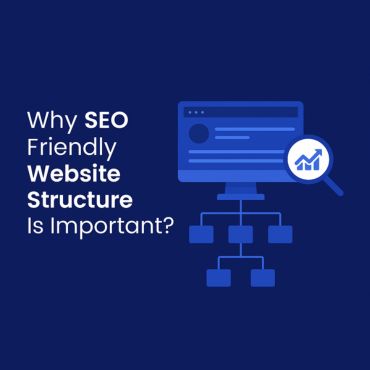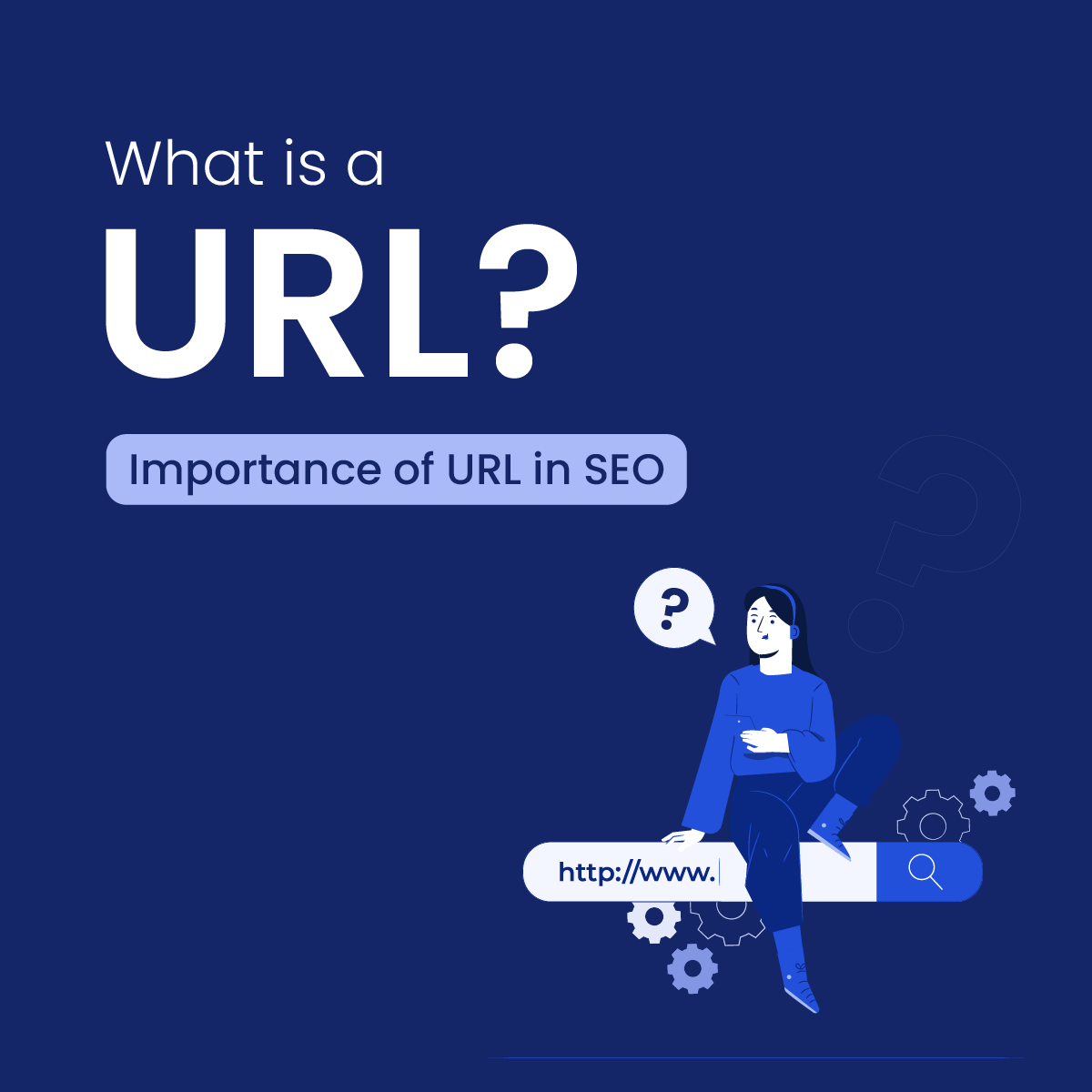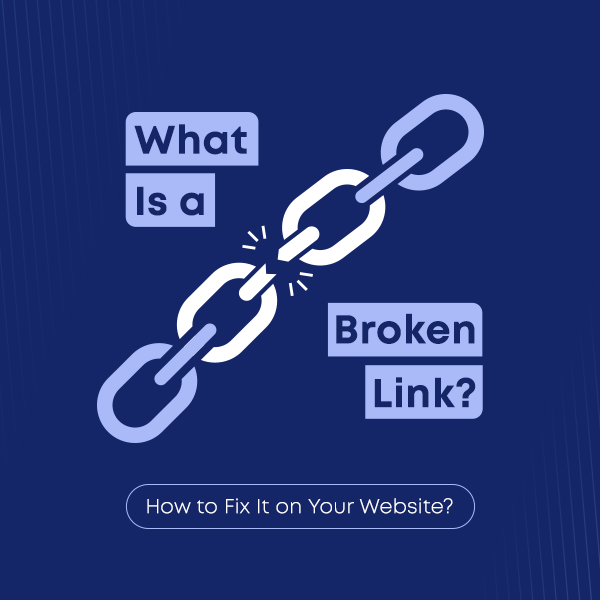
- What is Website Structure?
- Why is Website Structure Important for SEO?
- How to Choose the Best Website Structure for SEO
- Website Structure Best Practices for SEO
- Conclusion
- FAQs About Website Structure
Users come to the website to get the information or services they seek. For instance, a user clicks on your site with a specific requirement. They browse the website to find a solution, but what if they encounter a confusing layout, labyrinthine navigation, and bewilderment? This points to the poorly structured website.
In fact, 38% of users will stop engaging with a website if the layout or content is unattractive or hard to navigate.
Additionally, not only does a distorted or complex website structure frustrate users, but it also fails to meet SEO standards. A site’s structure impacts its SEO, making it difficult for search engines to crawl and index.
Therefore, it is paramount to have a well-structured, easy-to-understand, navigable, and more SEO-friendly website.
What is Website Structure?
A website structure, also referred to as website architecture, is a blueprint of your website. It is how the pages of the site are organized. This defines how supplementary pages branch off your home page in subtopics and folders. It is vital to consider the overall goal of the website, the hierarchy of information, and the ways users will access the site.
The best website structure is visually appealing, has a logical order of the site’s content, and is easy for users to understand and use.
A well-structured website significantly impacts several key SEO factors, including site speed, crawlability, mobile friendliness, user experience, internal linking, URL structure, and indexability. A robust site structure enhances overall user experience, website efficiency, and SEO performance.
Why is Website Structure Important for SEO?
A website structure is essential for SEO, as a well-defined structure makes it easier for search engines to crawl, index and rank higher in search results. It plays a vital role in your SEO strategy, as site structure helps Google determine which pages of your site are most important. A logical structure enhances user experience, increases engagement, and reduces bounce rate.
Best Website Structure for e-commerce SEO
For example, an e-commerce site selling clothing should have a structure like:
Homepage > Category (Men, Women, Kids) > Subcategory (Formal, Casual, Ethnic, Activewear) > Product page.
This indicates a clear path that enables search engines to understand your site’s relevance and content and improves visibility. When a site lacks logical structure, it affects SEO in many ways, which are listed below.
Google Likes a Good Website Structure

You need a well-organized website content structure, as it helps Google easily understand and navigate your site. If Google finds your site unfriendly or confusing to users, it drops your search engine rankings. Therefore, ensure that you have a great website structure to increase user experience not only for users but also to improve your search engine rankings.
Sitelinks and Enhanced Visibility

Sitelinks are links to other pages or sections of pages that appear below search results. They accompany the main listing and direct users to additional pages that can increase visibility and click-through rates. Only a clear and logical site structure can increase the likelihood of site links being displayed, providing users quick access to relevant pages.
Enables Search Engine Crawlers to Index Your Site Efficiently

Search engine crawlers follow links to discover new pages. A clear hierarchy with internal linking and sitemaps allows users and search engine crawlers to move through your site easily and index all essential pages. This leads to a comprehensive representation of your site in search results and faster website indexing.
Key Elements of SEO-Friendly Website Structure
Logical Hierarchy
Imagine walking into a café. Would you want the menu items scattered randomly, or organized into clear sections like Drinks, Food, and Desserts? Similarly, a logical hierarchy on your website organizes content into categories and subcategories, making it easy for users and search engines to find what they need.
A well-structured café website might look like this:

Homepage → Menu → Drinks (Coffee, Tea, Smoothies) → Food (Sandwiches, Salads) → Desserts (Cakes, Cookies)
This pyramid-like hierarchy ensures:
- Users can quickly navigate to specific pages (e.g., “Coffee Menu”).
- Search engines understand the relationship between pages (e.g., “Coffee” is a subcategory under “Drinks”).
- SEO benefits : Clear URLs like /menu/drinks include keywords and help pages rank for terms like “best coffee near me.”
A chaotic structure (e.g., burying the “Contact Us” page under three submenus) confuses users and signals to Google that your site isn’t user-friendly. Prioritize simplicity and categorization to boost both SEO and customer satisfaction.
URL Structure
A logical URL structure gives search engines and users a clear indication of the page’s content. The URLs are important for SEO and should follow the structure set for the website. A good URL immediately tells you what the page is about, has clear and relevant keywords and a structure that displays the proper hierarchy of category, subcategory, product, etc., and is easy to read, remember, and share.
Navigation & User Experience
If the instrumental pages of your site, like the About page, Contact page, Blog page, etc., are concealed beneath layers of subfolders, it can be frustrating for visitors and confuse engine crawlers. Hence, balancing the depth and breadth of sites and having clear navigation to discover and index easily is crucial. Moreover, an organized site structure provides intuitive navigation, allowing visitors to find relevant information quickly. This increases engagement and fosters a sense of efficiency and ease.
Mobile Optimization
Mobile optimization is critical to SEO-friendly site structure because search engines prioritize mobile-first indexing. A major number of visitors originate from mobile devices. Hence, having a website with fast loading speed, responsive design, and excellent usability is pivotal. A well-optimized website ensures seamless engagement, boosts user satisfaction, and achieves high search rankings.
Page Speed
A page speed directly impacts the user experience. Google prioritizes websites that load quickly, and faster-loading sites rank higher in search results. Moreover, users are more likely to purchase or stay on your website if it loads quickly, leading to higher conversion rates. An SEO website audit helps identify and fix speed-related issues, ensuring your site performs at its best.
How to Choose the Best Website Structure for SEO
The best SEO-friendly website structure involves a strategic blend of search engine accessibility and user experience. All you need to do is plan a clear hierarchy, categorize the content logically in relevant sections, use descriptive URLs, link links within topic clusters, and maintain a flat structure. This is the ideal and generally used website structure that’s SEO friendly and ensures easy navigation of your site for visitors and search engines.
Here are some website structure best practices for SEO that you should implement to optimize your website
Website Structure Best Practices for SEO
Use a Simple and Clean Navigation Menu

One of the significant factors to consider when developing or improving site structure is to keep it simple. Make a few steps and clean navigation instead of the unending drop-downs. A user-friendly navigation system increases engagement and reduces bounce rates. So, remember that the purpose of your site is to provide users with a simple experience to navigate through the information or products they are looking for.
URL Optimization

URL optimization improves a site’s SEO by making it easier for search engines and users to find and understand its content. Creating user-friendly and short URLs reduces bounce rates and improves the user experience. To optimize URLs for SEO, ensure they are readable, concise, static, descriptive, lowercase, and keyword-rich to get the pages indexed and rank content efficiently.
Implementing a Clear Site Hierarchy
A clear site hierarchy allows search engines to easily understand the relation between your website’s pages, facilitating better indexing and crawling of your content. A top-down organization homepage followed by category and subcategory pages defines a clear path for users. Visitors can find information easily; a hierarchical organization allows for target keyword implementation and reduces orphan pages.
Internal Linking Strategies

Linking between pages strategically within different levels of the hierarchy helps search engines understand the relationship between content and spreads authority, boosting rankings. It guides visitors to relevant content and helps search engines discover and index all pages.
Using Breadcrumbs

Breadcrumbs are navigational aids showing users where they are on a website and how to return to the previous page. Using breadcrumbs on a website is the best SEO practice, as they improve the user experience. Search engines use breadcrumbs to understand site structure, and it clarifies page hierarchy for visitors and search engines.
Creating SEO-Friendly Sitemaps

Sitemaps act as a roadmap for search engines, allowing them to discover and index all important pages on your site easily. HTML sitemaps are user-facing; they list every page so users can locate anything if they get stuck. XML. Sitemaps are search-engine-facing, which means they list all URLs in a crawler-friendly format.
Website Content Structure

A logical website architecture is clearly defined and helps crawlers understand content relevance and hierarchy. Structured content hooks visitors to stay longer on your page. Well-planned website content increases the chance of earning site links, increases click-through rates, boosts credibility, and enhances SEO performance.
Implementing Structured Data (Schema)

Implementing structured data (schema) delivers explicit content about your site, making it easy for search engines to interpret it accurately. It allows your pages to appear with rich snippets in search results. You need to choose relevant schema types based on your content, as it helps search engines better understand and display your information, leading to improved crawlability and click-through rates.
Conclusion
Creating a smart website structure is important. It not only increases the user experience but also helps search engine crawlers index your pages effectively. A well-organized layout supports your SEO strategy and leads to measurable results. With a focus on consistency and clarity, your site becomes a true asset for both visitors and search engines. Connect with AONE SEO Service, your trusted SEO Company in India. We help you with organic SEO that helps make your website into a high-performing asset.
Get in touch with us:
📞 Phone: +91 8101118111
Email Us: info@aoneseoservice.com
FAQs About Website Structure
What are the three 3 basic website structures?
The three basic website structures are hierarchical, sequential, and matrix. These structures help determine how users navigate and understand a website’s information
What is a SEO friendly Website structure?
A well-organized website design, linked and presented in a way that makes it easy for search engines to crawl and understand content, is an SEO-friendly website structure. It ultimately improves the site’s visibility in SERPs.
What is the best site structure for SEO?
The best site structure for SEO is the one that is ‘Flat and Silo.’ It should be logical, intuitive, and simple, making it more accessible for search engines and users to find the content quickly.
What is a schema on a website?
The schema in the website is structured data. It is a form of code to add to your site’s HTML that allows engines to understand a website’s content. It provides additional context about your content, making it easier for search engines like Google to categorize and index it properly.
What is the site schema?
Site schema refers to the structured data that defines and categorizes different elements of a site’s content. It helps search engines understand a website’s context, structure, and relationships.







